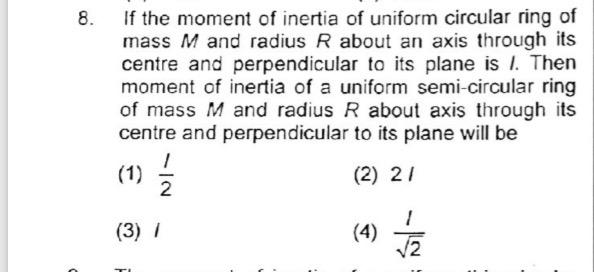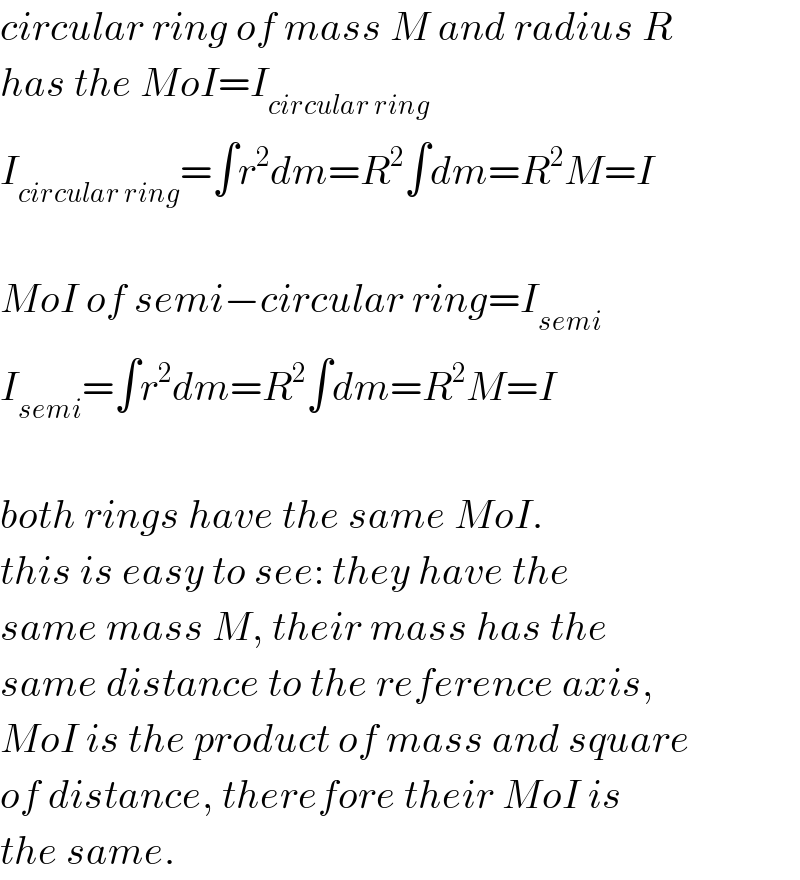Question Number 69878 by jagannath19 last updated on 28/Sep/19

Commented by mr W last updated on 29/Sep/19

$$\left(\mathrm{3}\right)\:{I} \\ $$
Commented by jagannath19 last updated on 29/Sep/19

$${sir}\:{can}\:{you}\:{please}\:{tell}\:{how} \\ $$
Commented by mr W last updated on 29/Sep/19

$${circular}\:{ring}\:{of}\:{mass}\:{M}\:{and}\:{radius}\:{R} \\ $$$${has}\:{the}\:{MoI}={I}_{{circular}\:{ring}} \\ $$$${I}_{{circular}\:{ring}} =\int{r}^{\mathrm{2}} {dm}={R}^{\mathrm{2}} \int{dm}={R}^{\mathrm{2}} {M}={I} \\ $$$$ \\ $$$${MoI}\:{of}\:{semi}−{circular}\:{ring}={I}_{{semi}} \\ $$$${I}_{{semi}} =\int{r}^{\mathrm{2}} {dm}={R}^{\mathrm{2}} \int{dm}={R}^{\mathrm{2}} {M}={I} \\ $$$$ \\ $$$${both}\:{rings}\:{have}\:{the}\:{same}\:{MoI}. \\ $$$${this}\:{is}\:{easy}\:{to}\:{see}:\:{they}\:{have}\:{the} \\ $$$${same}\:{mass}\:{M},\:{their}\:{mass}\:{has}\:{the} \\ $$$${same}\:{distance}\:{to}\:{the}\:{reference}\:{axis}, \\ $$$${MoI}\:{is}\:{the}\:{product}\:{of}\:{mass}\:{and}\:{square} \\ $$$${of}\:{distance},\:{therefore}\:{their}\:{MoI}\:{is} \\ $$$${the}\:{same}. \\ $$
